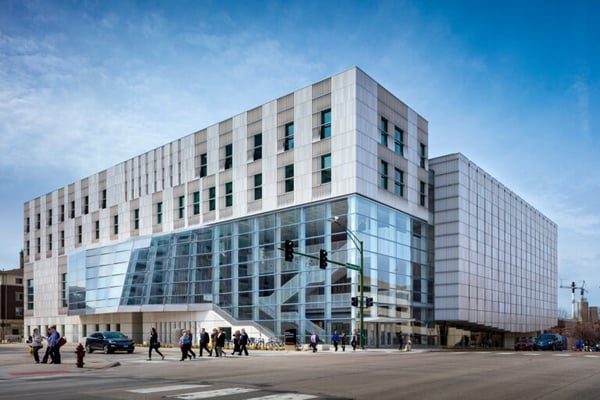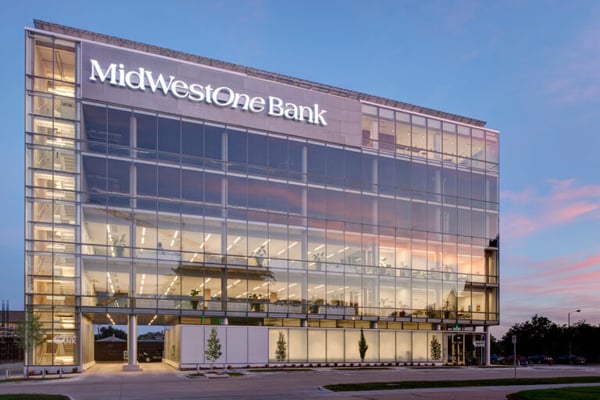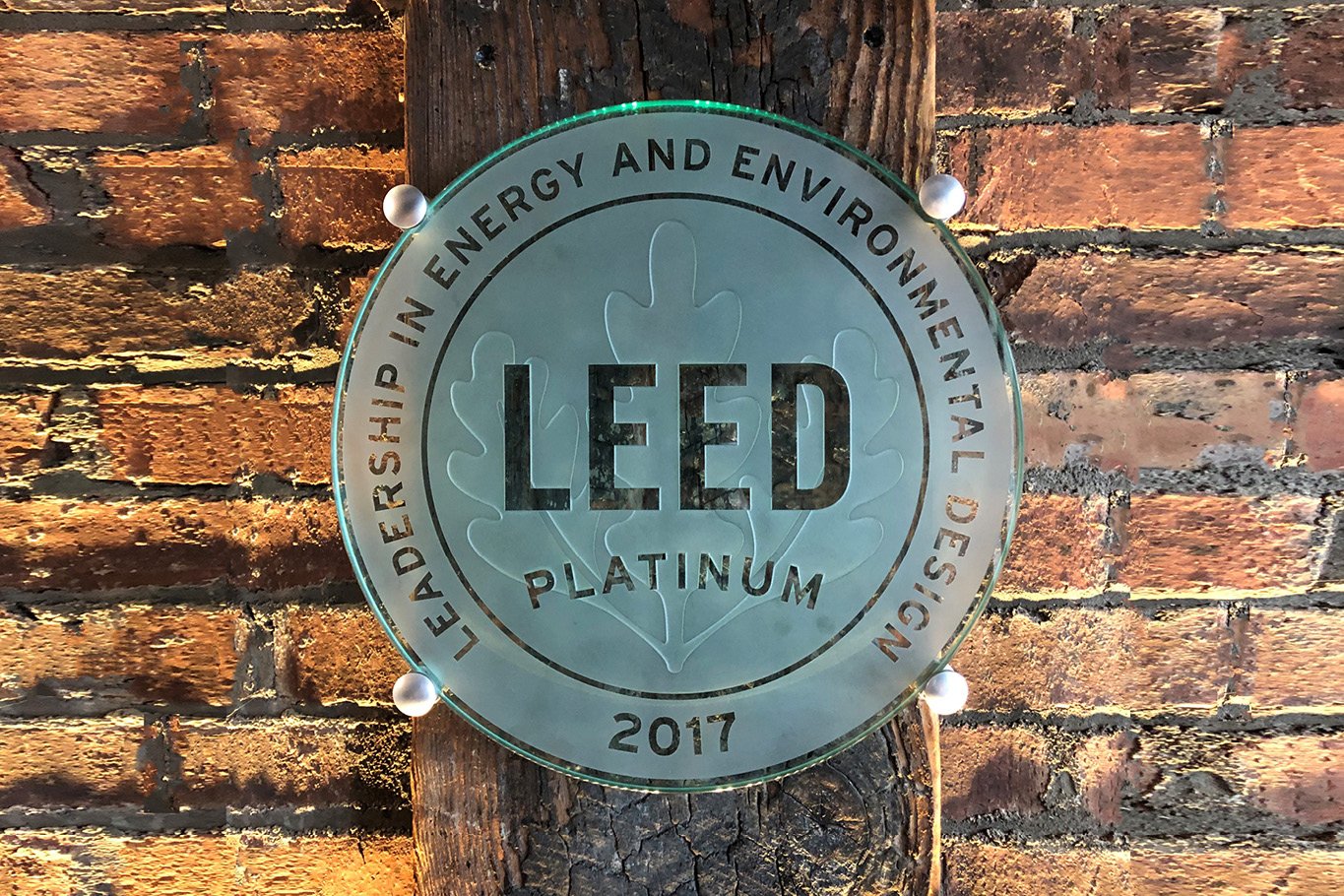Leadership in Energy and Environmental Design (LEED) is a framework for healthy and efficient buildings. Overseen by the US Green Building Council (USGBC), it has become the most widely used third-party green building rating system worldwide.
LEED’s popularity places it at the top of many building owners’ minds as they start the design process. You may be wondering, “is LEED right for my project?”
To date, we have completed 24 LEED-certified projects. While we would never deter a client from pursuing a green building certification, we believe in establishing realistic expectations at a project’s onset.
In this article, you will learn the benefits of pursuing LEED and four considerations you should make before including it in your project. These considerations include:
- Site constraints
- Costs
- The experience of your architect and contractor
- Your values
After reading, you will better understand if LEED aligns with your goals and how it will impact your project.
The Benefits of LEED
Like other third-party green building rating systems, LEED is holistic, designed to address everything from site development to carbon emissions to occupant health. The USGBC awards certifications on a point system for implemented strategies. Depending on the number of points, projects can earn one of four certifications: Certified, Silver, Gold, or Platinum.
Many municipalities view LEED as a “best practice” for new development. Some cities require new building projects to achieve a certification, and incentives or financing methods like Tax Incremental Financing (TIF) often specify LEED requirements.
For building owners, the rating system can reduce your carbon footprint and demonstrate your values, differentiating your organization from others in your industry. LEED also provides a return on investment by reducing the long-term costs of building ownership. Its health-related strategies are even shown to improve workplace productivity.
Most importantly, LEED provides an extra level of quality assurance on a building project. Third-party verification assures your architect and contractor are fulfilling your goals and your building is operating as intended.
Factors to Consider Before Pursuing LEED
Along with the benefits, you should also understand the challenges of pursuing LEED and the associated costs. Achieving certification can be difficult, so consider your goals, budget, and project constraints before incorporating it into your project.
1. Site Constraints
Location is one of the most important aspects of LEED. Of LEED’s 116 potential points, 16 are dedicated to location and transport, and 10 are dedicated to the sustainability of your site.
Dense areas with existing infrastructure are ideal for LEED projects. Infilling urban development protects wildlife and farmland and encourages walking, biking, and other sustainable forms of transportation. Easy access to public transportation is also encouraged.
Your architect can walk you through the site selection process to help you find a suitable location.
Remember: LEED is a point system. If your site is not ideal for LEED, you can still earn a certification. However, you may have to make up points by investing more heavily in other components of your project, like water conservation, material selection, and energy conservation.

Dense, urban areas are ideal for LEED projects.
2. Costs
LEED requires additional investments that may not be a part of a conventional building project. Your architect may need to consult specialists like energy modelers, potentially adding to the cost of professional fees.
Additionally, you will need to account for commissioning and certification fees. Commissioning agents will be involved in the project at each phase, from design to construction to the startup of the building’s systems. Their job is to ensure the building is functioning correctly and meets the requirements. Commissioning fees vary and depend on the size and complexity of the project.
Certification fees also vary. You should expect to pay at least $5000 for certification, but the exact cost depends on your project’s square footage.
Although LEED has additional upfront investments, designing to LEED standards can provide a long-term return on investment. The savings incurred from lower-than-average utility costs and employee productivity gains can make up for the additional upfront costs. Commissioning and certification help assure you receive a quality building with lower life cycle costs.
3. The Experience of Your Architect and Contractor
LEED adds a layer of complexity to a project. If your architect is inexperienced with the rating system, this complexity can negatively impact your schedule. Experienced architects will have protocols to accommodate LEED requirements and keep the project on track.
For contractors, LEED requires extra research and documentation that may not occur on a conventional building project. LEED devotes 13 credits to materials. Your contractor will need to research sourcing and health implications to meet the requirements.
During construction, the contractor will also need to utilize waste management strategies and divert materials from landfills. Contractors experienced with green building practices will have systems in place to meet these requirements.
Project Delivery Method
Due to the extra layer of complexity, LEED is well-suited for projects where the architect and contractor can have a collaborative relationship, especially for material selections and cost estimates. It helps to bring all members together at the project’s onset.
As such, LEED is well suited for negotiated contracts, construction manager models, or design-build projects. Of course, LEED can be done with any delivery method, including public bidding projects. If you have the option, however, it is best to bring a contractor to the table early in the planning process.
4. Your Values
Lastly, you should consider your values if you want to pursue LEED. Throughout the design process, you may have to make value-based decisions. Make sure you and your team are in alignment and have a clear understanding of why you are pursuing certification.
Additionally, commit to LEED in Pre-Design or Schematic Design. Green building standards cannot be added to a project later in its development. Your architect will need to design to LEED standards from the project’s onset.

One Place, a LEED certified building
What Are Your Next Steps?
LEED is a viable option for anyone considering a third-party green building rating system. By designing to LEED standards, you can reduce your carbon footprint, improve occupant wellness, and lower the life cycle costs of building ownership.
Before pursuing a certification, assess the viability of the site, the constraints of your budget, the experience level of your architect and contractor, and the values of your organization. LEED can increase a project’s complexity, so take some time to determine if it is right for you.
Explore your other third-party green building rating systems by reading our guide to the Living Building Challenge’s petal system. To learn more about our approach to sustainable design, contact us, and start a conversation with an architect.
